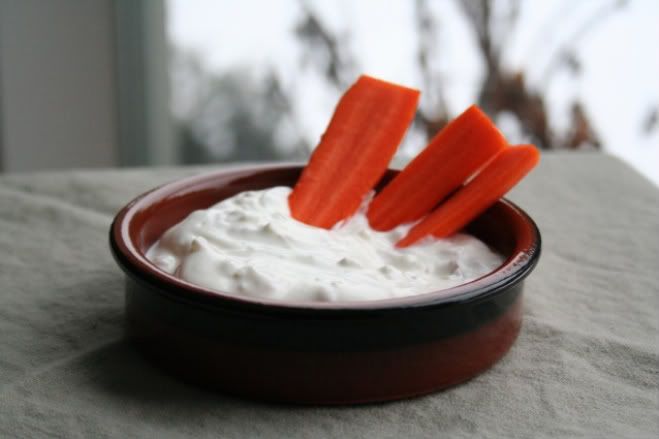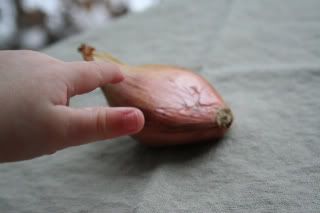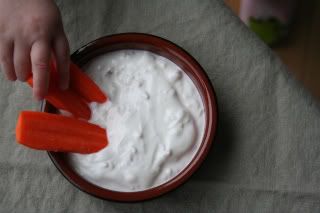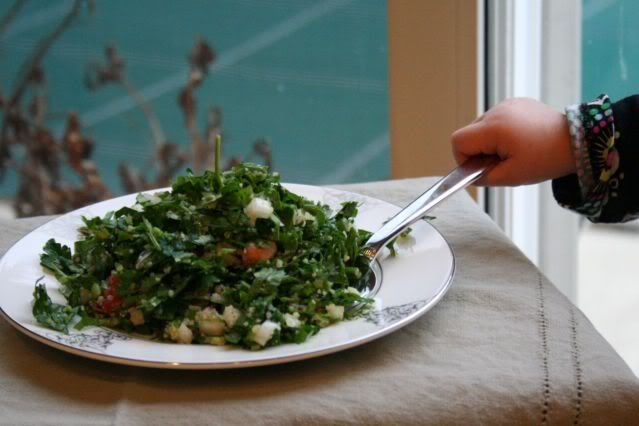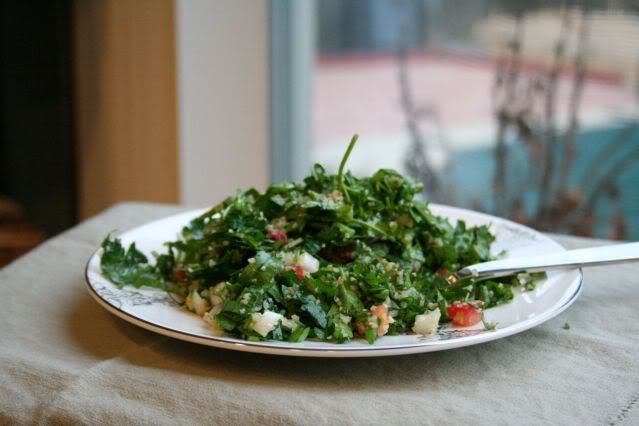
This recipe has its roots in my American upbringing. It is quite different from the flat Middle Eastern bread that best accompanies many of the dishes on this blog, and I'm proud to include it here as one of the many delicious and healthy foods my mom made for us. It also marks a significant shift in the direction of this blog. My curiosity about and need for more Iraqi and Middle Eastern family recipes has not abated, and I will continue to both refine previously posted recipes and blog new ones. Nonetheless, I find myself longing to juxtapose and meld them with the food I loved as a child, and which I am now working to include in my family's day-to-day routines. So now I will be including the best and most enduring of my American family recipes, too. This is exciting to me because it more accurately reflects a marriage as the melding of two pasts into one present, with the daily endeavor of embodying one's best and (hopefully) shedding of one's worst.
My mother, who is a fantastic cook and surely the reason I am so curious about food today, got this bread recipe from a friend, adapted it to our family's preferences, and made it often. I've changed it, too. It was an important staple in our home during a vegetarian (and nearly vegan) phase in our history. It's a stacked deck of very good stuff, and becomes a bigger winner as fresher ingredients are used. Lately for convenience I haven't used freshly milled whole wheat flour, but I know from first-hand experience that doing so bumps the flavor up a major notch. As many of the seeds and nuts called for are expensive and prone to go rancid quickly, why not be choosy? Include only your favorites and freeze what's left for later.
It's worth noting that I prefer this bread toasted unless it is made with fresh milled whole wheat flour, making it an ideal breakfast choice. As it's already full of rich ingredients, rather than slathering on butter (which is not a bad idea, by the way), we smash a banana or a couple of strawberries into the bread after toasting for a fresh and delicious taste surprise. Almond butter is another very nutritious spread (although densely caloric) that pairs well here. The Scientist favors white bread so this isn't a favorite for him, but our baby loves it, and I feel good giving it to her.
So, with pleasure and without further ado...the first American recipe of the new Marriage of Taste, Whole Wheat Bread.
 | 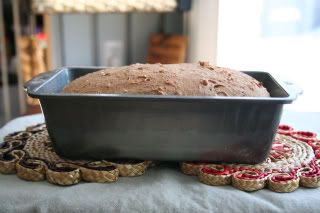 |
Whole Wheat Bread
Makes three loaves
(8.5 x 4.5 x 2.5 pans)
Ingredients
2 1/2 cup plus 2 Tbsp. very warm water
1/3 cup oil
1/2 cup brown sugar or honey
1 Tbsp. salt
2 Tbsp. yeast
1 cup either uncooked quick oats or cooked old fashioned oats, cooled to lukewarm
1/2 cup rye flour
Bonus optional ingredients (use the absolute freshest possible)
1/2 cup sunflower seeds
1/4 cup sesame seeds or pine nuts
1 Tbsp. poppy seeds
1/2 chopped walnuts or pecans
Obviously not optional
7 cups total whole wheat flour and/or white whole wheat flour, freshly milled if possible.
Directions
Butter the bottom and corners of pans, sprinkle some cornmeal over the butter. Tap out the excess cornmeal.
In a large bowl on a stand mixer, using the paddle attachment on the lowest setting, mix the first 8 ingredients well. Add the nuts and seeds and combine. Add the flour 1 cup at a time, switching to the dough hook after the 4th cup. Continue on the lowest setting for 1-2 minutes longer. The dough at this point will be dense, sticky, and difficult to handle, and the gluten strands will be clearly visible and clinging to the sides of the bowl. Form into 3 loaves, place into pans and let rise for 70 minutes in a warm location. The dough will have expanded to the edges of the pans and domed prettily.
20 minutes before baking time, pre-heat oven to 350°F. Bake for 35 minutes, rotating pans after 25 minutes to promote even browning.
Remove bread from pans right away and cool on racks to allow air to circulate all around the loaves. It's best to allow bread to cool completely before slicing.
Notes
-In the wintertime I place the loaves in the oven to rise, turn it on for just a minute or so, then turn off the oven and let the bread rise for 50 minutes. I remove the loaves to the stove top to rise the last 20 minutes while the oven pre-heats.
-I use whatever yeast I find at Costco in the enormous bag (currently Red Star), because it's super economical and works beautifully.
-My bread pans are not all the same size, but I've never had a problem with the loaves coming out over- or under-baked, although it does affect the height of the slices.
-I do like to rotate the pans part-way through baking to brown all sides equally.
-Once it's cooled completely, I slice the loaves and freeze them in Ziplocks (awkward but effective), then remove and toast up a slice whenever the baby needs a quick bite.
